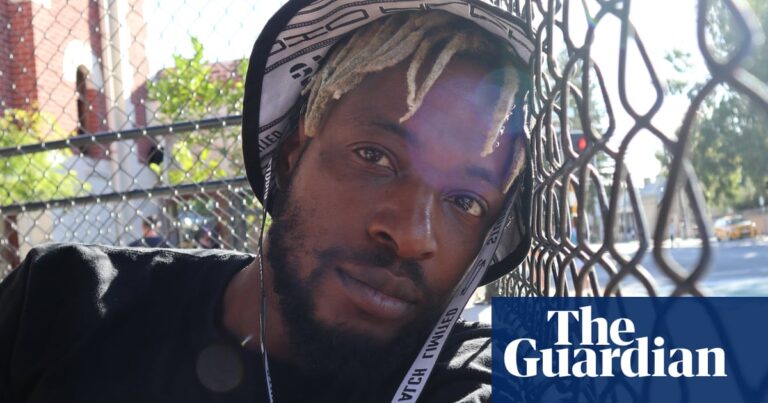We are all drawn to archetypal stories. Fairytales, folktales, fables, myths: we tell them over and over again because they always have meaning in our lives. We can always see reflections of ourselves in Hansel and Gretel, Oedipus and King Lear. They can mean different things at different stages of our lives and be interpreted in different ways by individuals sitting in the same audience.
Bram Stoker’s Dracula is among them. It one of the most influential novels of the turn of the last century and, along with the stories of Sherlock Holmes and Jesus Christ, among the most adapted works in cinema history.

While I love the book, I must admit that Stoker was a bit of a hack writer. His brilliance was in synthesising his many sources. He looked at what worked in the past, what was popular at the time, and added some more obscure touches. A key inspiration was The Vampyre, John Polidori’s 1819 novella about Lord Ruthven, a pale, handsome aristocrat vampire based on Lord Byron.
That book – the debut appearance of a seductive vampire – was a commercial hit, and vampires have stayed unnervingly attractive ever since. But before then, the vampire of Anglo-literary imagination had been a figure of introspection, melancholia and pathos. And these elements also made their way into the movies. From Klaus Kinski’s isolated interpretation of the Schreck vampire in Werner Herzog’s Nosferatu, to Gary Oldman’s romantic antihero in Francis Ford Coppola’s Dracula, and finally to Twilight’s Edward Cullen, the idea of the vampire as a relatable outsider has carried considerable cinematic charge.

By the time I was nine I already loved vampires. I had seen the Lugosi film often and had been Dracula for Halloween the year before; there’s a photo of me with a painted widow’s peak and plastic fangs too big for my mouth. I was also nine when I first saw Murnau’s Nosferatu (1922). This was a truly frightening vampire makeup design. The nails, the hunch, the shape of the pointed skull. As a child, it felt as if Max Schreck commanded the screen like a real vampire. The degraded quality of the 16mm VHS transfer made the film seem as if it was disinterred from its grave, unearthed from the past, adding to its authenticity. And this adaptation stripped Stoker’s story of its over-stuffed Victoriana and distilled it to its essence: that simple enigmatic fairytale.
About 10 years ago I embarked on writing the screenplay for my own adaptation of Nosferatu. In taking on the most influential horror film, based on the most influential horror novel, I felt a responsibility to make the vampire as scary as possible. This could not be a sparkling vampire.

So it was clear to me that I needed to return to the source, to the early folkloric vampire, to written accounts about or by people who believed that vampires existed – and who were terrified of them. Most of these early accounts come from Balkan and Slavic regions. Many are from Romania, where Stoker’s Dracula resides.
The vampire of folklore is not a nobleman. The vampire of folklore is not a suave, dinner jacket-wearing seducer. The vampire of folklore is a corpse. An undead corpse. These early vampires are visually closer to a cinematic zombie, often engorged with blood, their faces sometimes pooling with blood under their rotting skin, maggot-infested, in a state of terrifying putrefaction and decay. In many ways, they are not dissimilar from the Nordic revenants from the Icelandic sagas, the draugr. And indeed many of the northern European bog bodies were intended to be pinned to their graves for all eternity by sharpened hazel spars.

Most surprisingly, many of these early folk vampires do not even drink blood; rather, they might suffocate their victims to death or spread plague and disease. Some early folk vampires when disinterred from their grave were noted for having erections. Some of them came back to fornicate with their widows until the women died of an excess of intercourse. If they did drink blood, it was generally not from the throat, but the chest – the victim’s “heart blood.”
Accounts of these pestilent or blood-drinking revenants from the eastern frontiers of the Habsburg empire spread west throughout the 18th century mostly in German texts. It inspired much debate: were vampires real? It inspired art too. By 1748, the poem Der Vampir by Heinrich August Ossenfelder was published, perhaps the first big step in taking this folk monster into the gothic Romantic tradition that would eventually find its way in England through Byron. Soon after publication, Polidori’s elliptical and poetic novella was adapted into a flashy, schlocky, plot-driven stage play a number of times.

New vampire mythologies were cooked up in these stage productions, as well as in penny dreadfuls and other works of British fiction – drifting further and further away from the Balkan sources. By the time Stoker had his hand in it, there was much to play with. Admirably, Stoker studied Transylvanian folklore as ardently as he could from the library. He infused his book with many fantastic details described by Emily Gerard in her 1885 book Transylvanian Superstitions. But Polidori’s Lord Ruthven was still the prototype. And Stoker felt the freedom to invent his own mythology, too. Vampires of folklore do sometimes become wolves or werewolves – but never bats.

Stoker’s vampire became the new standard. And after Lugosi and Christopher Lee he continued to evolve. The vampire of pop culture has proved infinitely mutable. From the works of Anne Rice to The Lost Boys, from Buffy to Blade, even the Count in Sesame Street, there is a vampire to suit every time, every need, and every taste – even if your taste is Count Chocula Cereal. And yet, the folk vampire still, always, lurks in the shadows of them all.
You can still find reports of vampirism from the Balkan regions, where the folklore is thoroughly enmeshed with local culture. Not so long ago, in 2004, a group of villagers in Marotinu de Sus, Romania, exhumed and ritually mutilated the corpse of a man they believed to be a vampire. Before his death, he was known as a difficult man and by all accounts a heavy drinker. The man’s family alleged that after his demise and burial, he had returned as a strigoi, a kind of folk vampire-spirit, and would attack them in the night.
The strigoi seemed to especially target his daughter-in-law, who became ill following these encounters. The villagers called in a local vampire hunter, who advised them to dig up the man’s body, ritually mutilate and burn it. The hunter mixed the ashes of the corpse with wine and gave it to the vampire’s victims to drink, and for these believers – it worked. The daughter-in-law’s health returned, and the nocturnal visits stopped.

What are we to make of stories like this? What kind of trauma, pain and violence is so great that even death cannot stop it? It’s a heartbreaking notion. The folk vampire embodies disease, death, and sex in a base, brutal and unforgiving way.
Murnau’s Nosferatu is often credited with inventing the idea that vampires are destroyed by sunlight. But in fact, folkloric vampires very often must return to the grave before the first cock’s crow. It is not the sunlight that kills them. They are not allergic to light and they don’t burst into flame. It is the purity of dawn that they simply cannot exist in. They are bound to the grave, to shadows, to darkness.
For me, the vampire must exist in shadow to have power. But it is the vampire’s ability to transcend death that will keep them for ever in our imaginations. The grave cannot contain them. The vampire will always rise again.
Source: theguardian.com

















